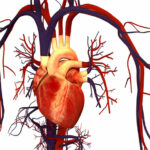Food for Thought
Paradoxically…
When it comes to paradoxes, nutrition science produces its fair share. The French paradox has been followed by the Spanish paradox, the Australian paradox, the alpine paradox and more.
The French paradox was based on observational studies that found that despite enjoying their cheese, butter, cream, foie gras and confit de canard, French people had low rates of coronary heart disease (CHD), in seeming contradiction to epidemiological research from the 1950s that had shown that that eating lots of saturated fat increases your risk of CHD. What were the French doing the rest of us weren’t?

Writing in The Lancet in 1992, Professor Serge Rénaud (“father of the catchphrase”) suggested that a glass of red wine might be the mitigating factor. “In most countries, high intake of saturated fat is positively related to high mortality from coronary heart disease (CHD). However, the situation in France is paradoxical in that there is high intake of saturated fat but low mortality from CHD. This paradox may be attributable in part to high wine consumption. Epidemiological studies indicate that consumption of alcohol at the level of intake in France (20–30 g per day) can reduce risk of CHD by at least 40%.” One has to say “the rest is history”. The outcome was an increase in red wine sales and numerous best-sellers sharing the secrets behind the French paradox with us.
What a success story, but sadly, too good to be true. It’s just a story. We now know it is wrong to assume that saturated fat is all that matters to predict CHD risk, it is just one of many dietary, lifestyle and genetic factors involved. And it is wrong to suggest drinking a few glasses of red wine will make it better. If anything, the whole story proves once more the concept that the balance of diet in general is more important than any single component in preventing disease and ensuring good health and it’s not a good idea to take the findings from observational studies of one group of people and willy-nilly apply them to another. So let’s not go there again, which brings us to some current single-nutrient solutions.
Based on the best available evidence, certain factors in carb-containing foods have been identified as “good” (e.g., fibre) and “bad” (e.g., added sugar). Much of the evidence for fibre and bowel cancer and added sugar and type 2 diabetes, however, is only observational: data analysis has come up with associations. Such findings don’t prove cause and effect, for that you need well designed clinical trials which take time, money and ethics approval, which tends to put them in the “too-hard-not-feasible” basket. So, back to observational and animal studies.
In our own backyard here in Australia, our health authorities adopted the international advice to increase fibre to protect us from bowel cancer and to decrease added sugars so we don’t get fat or get type 2 diabetes. Obedient as ever in public health matters, Australians have taken this advice on board: our consumption of added sugars is down and our consumption of fibre is up. But we haven’t been rewarded with the expected health outcomes: we have some of the highest colorectal cancer rates in the world and our rates of obesity and type 2 diabetes continue to rise. Now that’s a paradox, isn’t it?
Not really. The focus on the magic bullet, simple “single nutrient” message is the wrong message; as Dr David Katz says it is repeating the “dietary follies of history”. “We can never get to good diets (or good health) one nutrient (or food) at a time.”
In his review, The French Paradox: Lessons for Other Countries, Jean Ferrières writes: “The French paradox does not teach other countries any lessons since each country has probably its own appropriate preventive solutions. In primary prevention, adherence to lifestyle guidelines is associated with a very low risk of CHD. The French paradox concept should foster research on protective CHD risk factors while conveying, in primary prevention, messages promoting healthy behaviour such as regular physical exercise, optimal diet, and life without smoking.”







